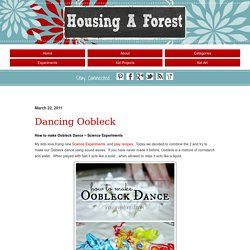

The Magic School Bus: In the Haunted House - Sound is Vibration. 5th grade science: Properties of Sound-Vocabulary flashcards. Science for Kids: Fun Learning about Sound Energy. We had a great time learning about sound energy today!

Sound energy is a type of energy that is made by vibrations. First, we just blew through straws. No sound was created because nothing was vibrating. Then we cut the straws into straw horns & we had a little kazoo orchestra in my classroom! My students could see that in order to create sound - we had to make the straw vibrate. We cut straw ends into points & then flattened it using our teeth. Variables: -we added another straw to the end and the pitch became lower -we cut the straw in half & the pitch became higher -we cut tiny holes into the straw & played it like a recorder This was so much fun!
If you're looking for some other fun sound activities, please check out my new Sound packet on Teachers Pay Teachers: StudyJams. Interface. Learn about Sound. How Sound Waves Travel View – Fun Science Activities for 5th Grade. Dancing OobleckHousing a Forest. My kids love trying new Science Experiments, and play recipes.

Today we decided to combine the 2 and try to make our Oobleck dance using sound waves. If you have never made it before, Oobleck is a mixture of cornstarch and water. When played with fast it acts like a solid…when allowed to relax it acts like a liquid. This post contains affiliate links for your convenience. When we saw a few youtube videos that involved Dancing Oobleck, we decided we needed to take our gooey play to the next level. Dancing Oobleck Recipe You will need to make your Oobleck thicker than usual. About 2 cups of Corn Starch to 1 cup of water. Materials Needed: Once your recipe is ready let the kids play for a bit while you set up the next step. Instructions: Place the cookie sheet onto the speaker of the sub, and pour in the Oobleck.You can download different test tones and play to see what works best for you. Sound - Experiments 2. We are still working on this page.

Children's work will continue to arrive here over the next few days! Hang in there! Experiment: To investigate whether sound travels better through a solid or a gas. Materials: You will need- Two 30 cm pieces of thread. Method: What you have to do- 1) Tie one piece of thread to each end of the hanger. 2) Hold the hanger upside down by the ends of the pieces of string. 3) Bang the hanger against a table. 4) Listen to how loud the sound is!
Results:Did you discover what we did? Conclusions: Sound travels better through a solid (string), than through a gas (air). Table Thunder! Experiment: Another experiment to investigate whether sound travels better through a solid or a gas. You will need- One friend. 1) Sit opposite your friend. 2) Knock on the table. 3)Listen to how loud the sound is. 4) Ask your friend to place their ear against the surface of the table. 5)Knock on the table again. 6) Ask your friend to describe how loud the sound is through the table. Science of Music: Headlands Sound Experiments. Mrs. Brunson's Guide to Teaching Your Child at Home: Science-How does sound work? The goal of this lesson is to teach your child all about sound and sound waves.

It is something you can do at home with supplies laying around the house. The only thing you may not have at home are the 6 glass bottles, I pulled mine out of recycling, if you don't have them just use glasses with water and have them tap on the side rather than blow and tap. Level --3/4th grade--extensions for older kidsMaterials Cups-paper or foam (we used plastic solo cups) rubber bands 6 glass bottles pencil wooden ruler paper plate rice radio string paperclip water scissors Objectives After doing this activity your child(ren) should be able to identify a variety of sounds, recognize that vibrations produce sounds, know that sounds travel through gas, liquid, and matter, experiment with volume and pitch, apply knowledge of pitch to create a tune. Activity I always like to start out a lesson by questioning to see what kids already know in the classroom, I do this at home too.